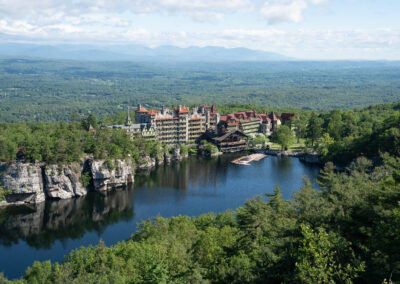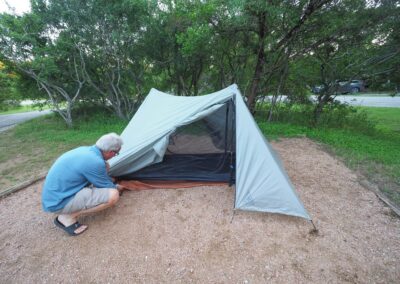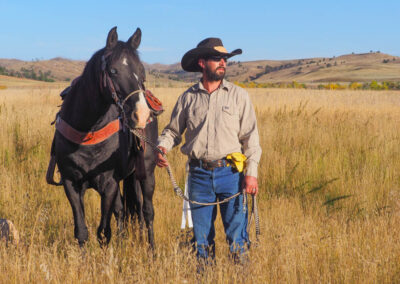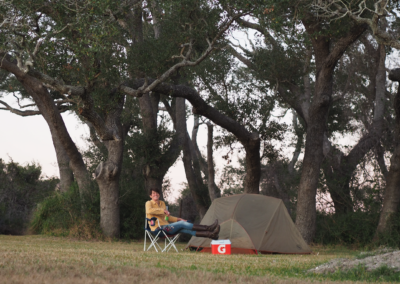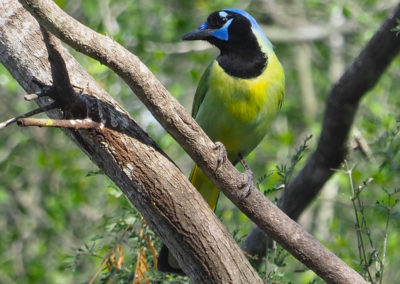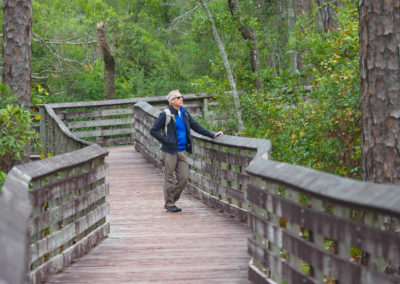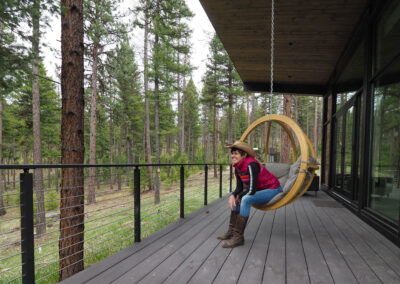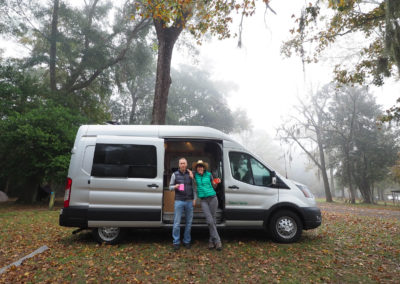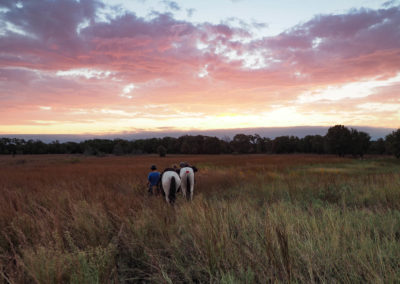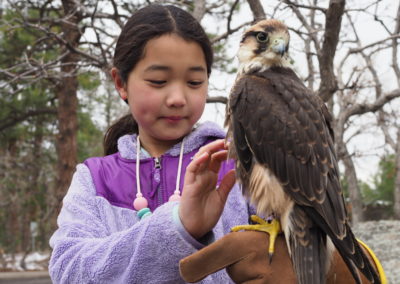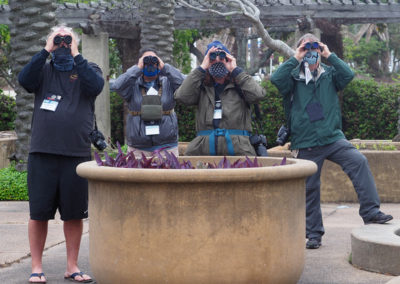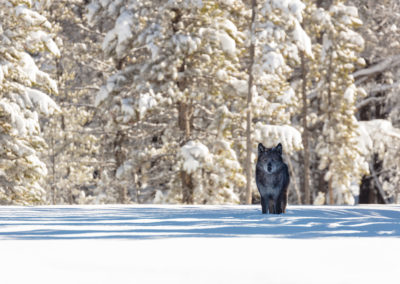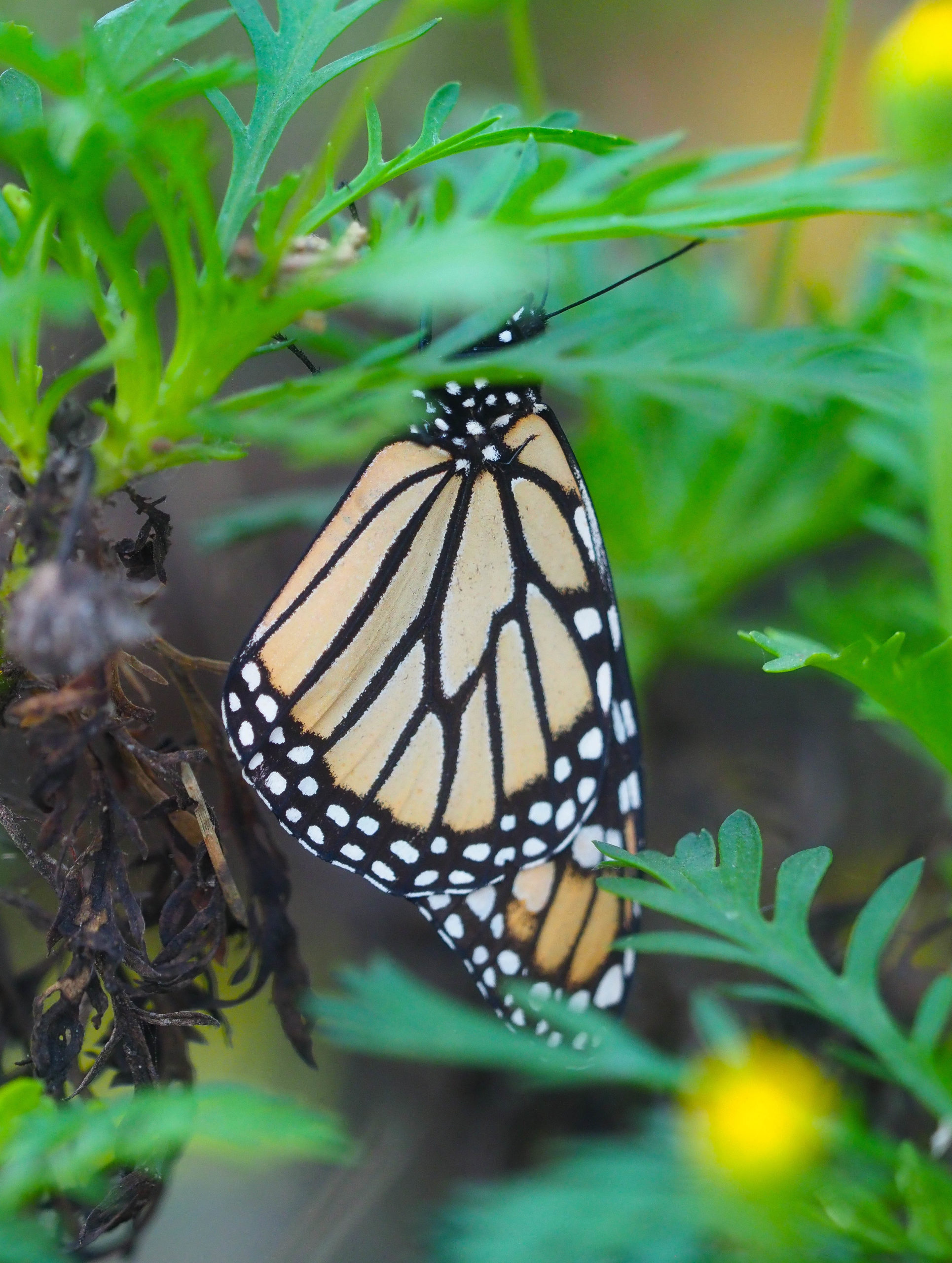
A monarch butterfly clings to a bush at the Pacific Grove Monarch Sanctuary on Oct. 26, 2022. Pam LeBlanc photo
Every winter, thousands of monarch butterflies make their way south down the California coast, looking for a cool, humid spot to spend the winter.
Clouds of the orange- and black-winged insects end up in Pacific Grove, California, where they cluster in treetops and thrill tourists and locals who head to the Pacific Grove Monarch Sanctuary to admire them. The whole town embraces the migration. Shops and homes are decorated with human-made butterflies, and the Butterfly Grove Inn next to the sanctuary is decked out in monarch decor.
Scientists consider the 2.4-acre city-owned sanctuary, nestled in a grove of trees at 250 Ridge Road in the seaside town, one of the most important overwintering sites in California. The California monarchs are part of the western migration route. The monarchs that pass through Texas are part of a separate group that overwinters in Mexico.
My visit to the Monterey area this week coincided with the arrival of some of the early travelers.
A short trail weaves through the park. Signs along the flat, dirt trail explain some basic facts about the butterflies.
The migration peaks in mid-winter. On the late October day that I visited, clumps of several hundred butterflies clung to high branches of three very tall trees. You can check the sanctuary’s website to see the latest counts, which are updated weekly. The current count is 3,823.
Spotting the monarchs
I had to look hard. At first, the butterflies looked like brown, dead leaves high in the treetops. Then I noticed a few bright orange spots – individuals with their wings opened. At one point, a bird landed on a branch, disturbing a few dozen of the insects, which fluttered away.

OLYMPUS DIGITAL CAMERA
They cluster together for protection against rain, wind and predators.
We found one monarch perched in the branches of a bush at eye level. A few others flitted past; one landed on the ground along the trail.
Monarchs populations are declining
Signs remind visitors to stay on the path and not to disturb any clusters. Dogs are not allowed.
The monarch population has declined in recent years. Since counts began at the sanctuary in 1997, numbers peaked at about 45,000. Since then, numbers have fallen by about 90 percent, according to a volunteer at the sanctuary.
Related: Meet the new baby porcupines at the Austin Nature and Science Center
It takes several generations of butterflies to complete a single migration. Those born in spring and summer live are short-lived. Those born in fall can live six or eight months – and can cover up to 2,000 miles.
The butterflies typically stay in Pacific Grove from late October until March, when warmer temperatures trigger the development of sex organs. Plan a visit then and you might see amorous monarch couples spiraling through the air.
Want to help monarchs? Plant native milkweed and wildflowers. Avoid using chemical pesticides and herbicides. And protect open spaces like the sanctuary in Pacific Grove.
For more information about the Monterey area, go to SeeMonterey.com.

















